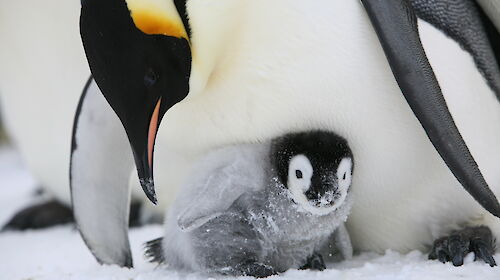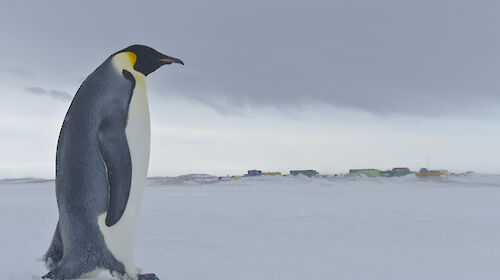A team of researchers, led by scientists from the Universities of Tasmania, Southampton, Oxford and the Australian Antarctic Division, examined the genetic diversity of modern and ancient emperor penguin populations in Antarctica to estimate how they had been changing over time.
Emperor penguins are highly cold-adapted, reliant on sea ice and therefore vulnerable to climate change. The iconic species breeds on sea ice during the Antarctic winter when temperatures regularly drop below −30°C.
However, the research team discovered that conditions were too harsh even for emperor penguins during the last ice age and that the population then was roughly seven times smaller than today and split into three refugial populations.
Emperor penguin numbers only increased over the last 12,000 years as sea ice decreased around Antarctica throughout the Holocene warming period. This finding suggests that current sea ice conditions may be optimal for emperor penguins.
The research, published today in the journal Global Change Biology, was jointly led by Jane Younger, a PhD student from the University of Tasmania’s Institute for Marine and Antarctic Studies and Gemma Clucas, a PhD student from Ocean & Earth Sciences at the University of Southampton.
The authors said their research showed emperor penguin colonies spanning 8,000 kilometers of coastline are interbreeding, suggesting they migrate much farther around Antarctica than previously thought. This has important implications for forecasting studies that have so far considered breeding colonies as isolated units.
Jane Younger explained: “Due to there being about twice as much sea ice compared to current conditions, the penguins were unable to breed in more than a few locations around Antarctica. The distances from the open ocean, where the penguins feed, to the stable sea ice where they breed was probably too far. The three populations that did manage to survive may have done so by breeding near polynyas – areas of ocean that are kept free of sea ice by wind and currents.”
One of these polynyas that supported a population of emperor penguins throughout the last ice age was probably in the Ross Sea. Gemma Clucas said the emperor penguins that breed in the Ross Sea today are genetically distinct from other emperor penguins around Antarctica. “Our research suggests they became isolated during the last ice age, pointing to the fact that the Ross Sea could have been an important refuge for emperor penguins and possibly other species too.”
University of Tasmania project leader, Dr Karen Miller, said emperor penguins in the Ross Sea do not interbreed with penguins from elsewhere. This is puzzling as there are no clear barriers isolating the Ross Sea colonies.
“It’s clear that the Ross Sea has been an important area for emperor penguins in the past and is likely to be in the future. This alone emphasises the need for careful protection of this important part of the Antarctic ecosystem.
“The projected rate of temperature increase over the next century is an order of magnitude greater than that during the early Holocene. Whether the resilience demonstrated in the past by Emperor penguins will enable them to adapt to projected climate change remains to be seen, as rising temperatures will alter their habitat far more rapidly than in the past,” Dr Miller said.








